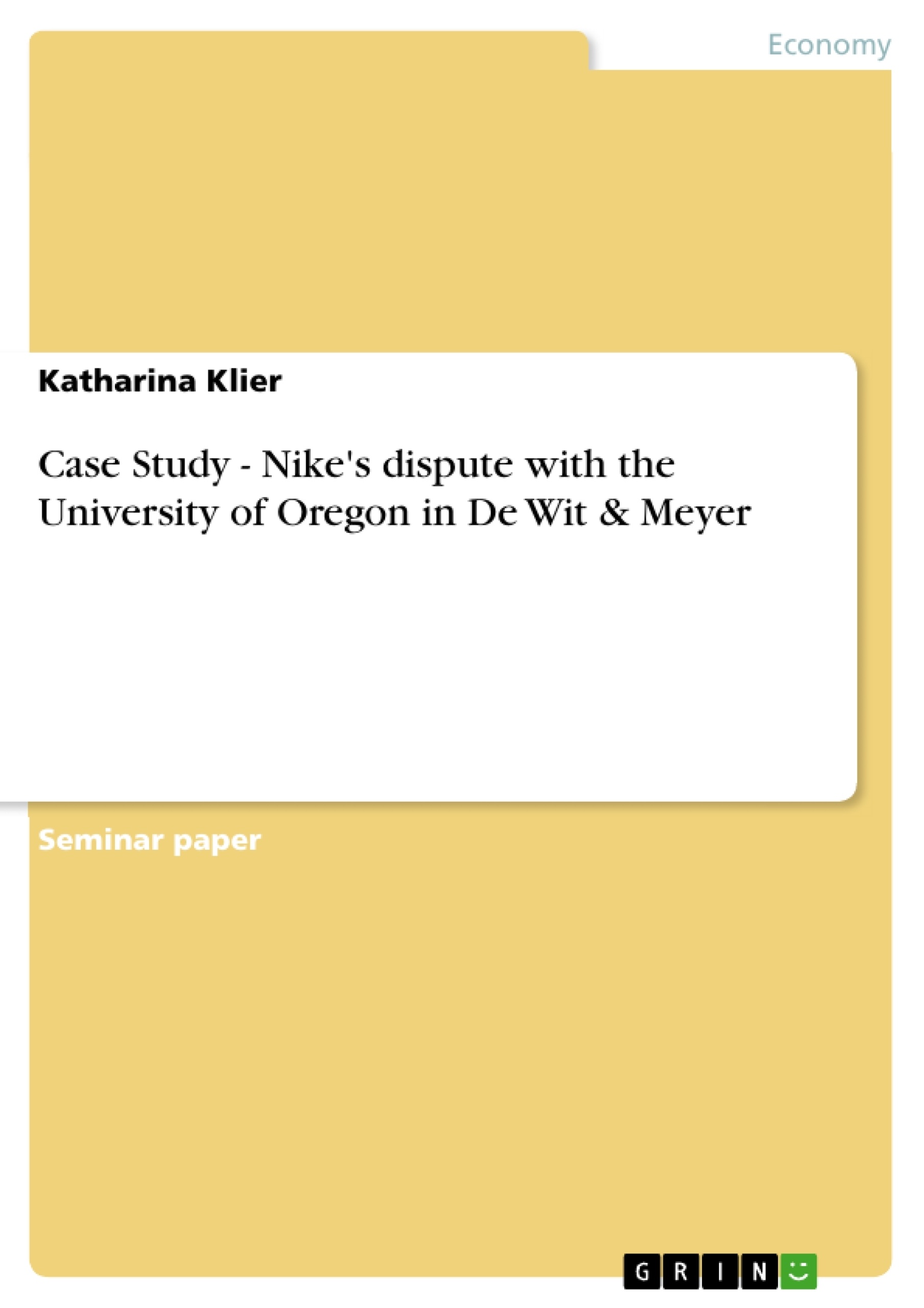Executive Summary:
This report analyses the actual strategic position of the sports company Nike and carries out the development of the global sport’s industry and its influences on Nike. In order to analyse the external and internal influences, this report will commence with Porter’s value chain model and his five forces framework to critically evaluate the reasons for Nike’s strategic decision to outsource its manufacturing factories to Asia. The reader will also achieve an understanding of the environment in which the company operates, which will be enlarged in the following part, by evaluating the advantages of international trade for Nike.
The second part of this report will concentrate on two of Whittington’s schools of thought and concentrates on Nike’s systemic approach to its strategic position. Finally, Mintzberg ́s cultural and environmental schools of thought will be discussed and compared to illustrate Nike’s development between the years of 1996 and 2000.
Inhaltsverzeichnis (Table of Contents)
- EXECUTIVE SUMMARY
- QUESTION ONE:
- A) PORTER'S VALUE CHAIN
- B) PORTER'S FIVE FORCES FRAMEWORK
- c) BENEFITS FOR NIKE FROM INTERNATIONAL TRADE
- QUESTION TWO:
- A) WHITTINGTON'S SYSTEMIC AND PROCESSUAL SCHOOLS OF THOUGHT
- B) APPLICATION OF THE SYSTEMIC SCHOOL OF THOUGHT TO NIKE
- QUESTION THREE:
- A) MINTZBERG'S CULTURAL AND ENVIRONMENTAL SCHOOLS OF THOUGHT
- B) APPLICATION OF MINTZBERG'S CULTURAL SCHOOL OF THOUGH TO NIKE
- REFERENCE LIST
- A) PRIMARY SOURCES
- B) SECONDARY SOURCES
Zielsetzung und Themenschwerpunkte (Objectives and Key Themes)
This report aims to analyze the strategic position of Nike, a leading sports company, and examine the evolution of the global sports industry and its impact on Nike. The report will utilize Porter's value chain model, his five forces framework, and an evaluation of the advantages of international trade for Nike to assess the external and internal influences on the company's strategic decisions. The report will also delve into Whittington's schools of thought, focusing on Nike's systemic approach, and discuss Mintzberg's cultural and environmental schools of thought to illustrate Nike's development between 1996 and 2000.
- Nike's strategic positioning and its evolution in the global sports industry
- The influence of Porter's value chain model and five forces framework on Nike's strategic decisions
- The impact of international trade on Nike's operations and competitive advantage
- An analysis of Nike's strategic approach through Whittington's schools of thought
- Nike's cultural and environmental development between 1996 and 2000, based on Mintzberg's schools of thought
Zusammenfassung der Kapitel (Chapter Summaries)
The first chapter of this report explores Porter's Value Chain model, outlining its significance in identifying a firm's competitive advantage through its core competences. The analysis focuses on Nike's decision to outsource manufacturing processes to Asia, highlighting the company's focus on its core strengths in research and development, marketing, and retailing. This chapter further examines the cost advantages and efficiency gains achieved through outsourcing.
The second chapter delves into Porter's Five Forces Framework, a structural analysis tool used to assess an industry's competitive landscape and identify opportunities for superior value creation. The analysis explores the various forces impacting Nike's industry, including the threat of entry, the power of suppliers, and the intensity of rivalry. It examines how these forces affect Nike's profitability and its ability to sustain a competitive advantage.
The third chapter discusses the benefits of international trade for Nike, examining the strategic advantages of global sourcing, particularly in the context of manufacturing operations in Asia. The chapter highlights the cost reductions, access to skilled labor, and proximity to raw materials that Nike has achieved through its internationalization strategy.
Schlüsselwörter (Keywords)
This report focuses on strategic management, the sports industry, Nike, Porter's value chain, Porter's five forces framework, international trade, outsourcing, core competencies, Whittington's schools of thought, Mintzberg's schools of thought, and the company's cultural and environmental development.
- Quote paper
- Studentin Katharina Klier (Author), 2011, Case Study - Nike's dispute with the University of Oregon in De Wit & Meyer, Munich, GRIN Verlag, https://www.grin.com/document/184757



